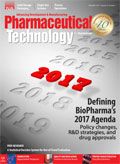Staffing and Preparation for Audits
Siegfried Schmitt, PhD, principal consultant, PAREXEL, discusses how to handle audits and inspections during business expansion.
Q: Our quality unit is responsible for hosting audits and inspections for our manufacturing site. We are a contract manufacturer and due to our expanding client base, we are experiencing a growing number of customer audits and regulatory inspections. Can you provide advice for how to best accommodate this increased workload?
A: First, congratulations on your growing business. In terms of managing this rising number of audits and inspections, we would recommend developing procedures. Formalized processes, in addition to using the right tools, can help make the job more predictable, improve planning, and provide a higher chance of success. You may call this a playbook, or simply “Good Guide to Audits/Inspections.” Being prepared and having a defined process helps reduce uncertainty and drives efficiency.
It is good practice to start putting together this document by getting input from all parties involved. We recommend starting at the moment an audit or inspection is announced, and then structuring it by phase, such as preparation/planning, hosting, follow up/post event, and close out.
The guide should include roles, rather than name-specific individuals, when explaining responsibilities involved in the inspection, as this eliminates the need for many updates or changes. For each role, it is beneficial to describe each person’s particular involvement in the inspection (e.g., active or stand by/back up), what and when they are needed, where (e.g., front office or back office “war room”), and any other pertinent information. Note that some roles may only be required occasionally, such as translators.
This playbook can be in any format suitable for your needs, but often it is in the form of a spreadsheet. A spreadsheet allows activities to easily be added into sequence and the ability to select tasks for individual roles or locations. Furthermore, completed tasks can be ticked off, together with any comments or feedback as required.
Information for auditors
A number of documents and data are typically requested by auditors and inspectors; including, but not limited to:
- Number of deviations
- Number of batches manufactured
- Number of out-of-specification (OOS) results
- List of standard operating procedures (SOP)
- Organizational structures
- Annual quality reports
- Number of complaints
- Number of recalls (if applicable).
Having a spreadsheet to refer back to, therefore, is crucial to staying organized and up to date with inspections. Having a running tally readily available in electronic format will greatly reduce the effort with preparations. It can also be beneficial to keep a set of printed copies of all SOPs handy, making these available upon request, which reduces time and effort during the audit or inspection.
Being prepared is key
Ultimately, the key to being prepared for audits and inspections is to follow the old adage: preparation, preparation, preparation. Furthermore, with practice comes experience, and with experience comes perfection. Maintaining procedures and metrics will be helpful for any inspection, especially as you expect to experience more inspections due to a growing client base.
Article Details
Pharmaceutical Technology
Vol 41, No. 1
January 2017
Page: 70
Citation
When referring to this article, please cite it as S. Schmitt, "Staffing and Preparation for Audits," Pharmaceutical Technology 41 (1) January 2017.
